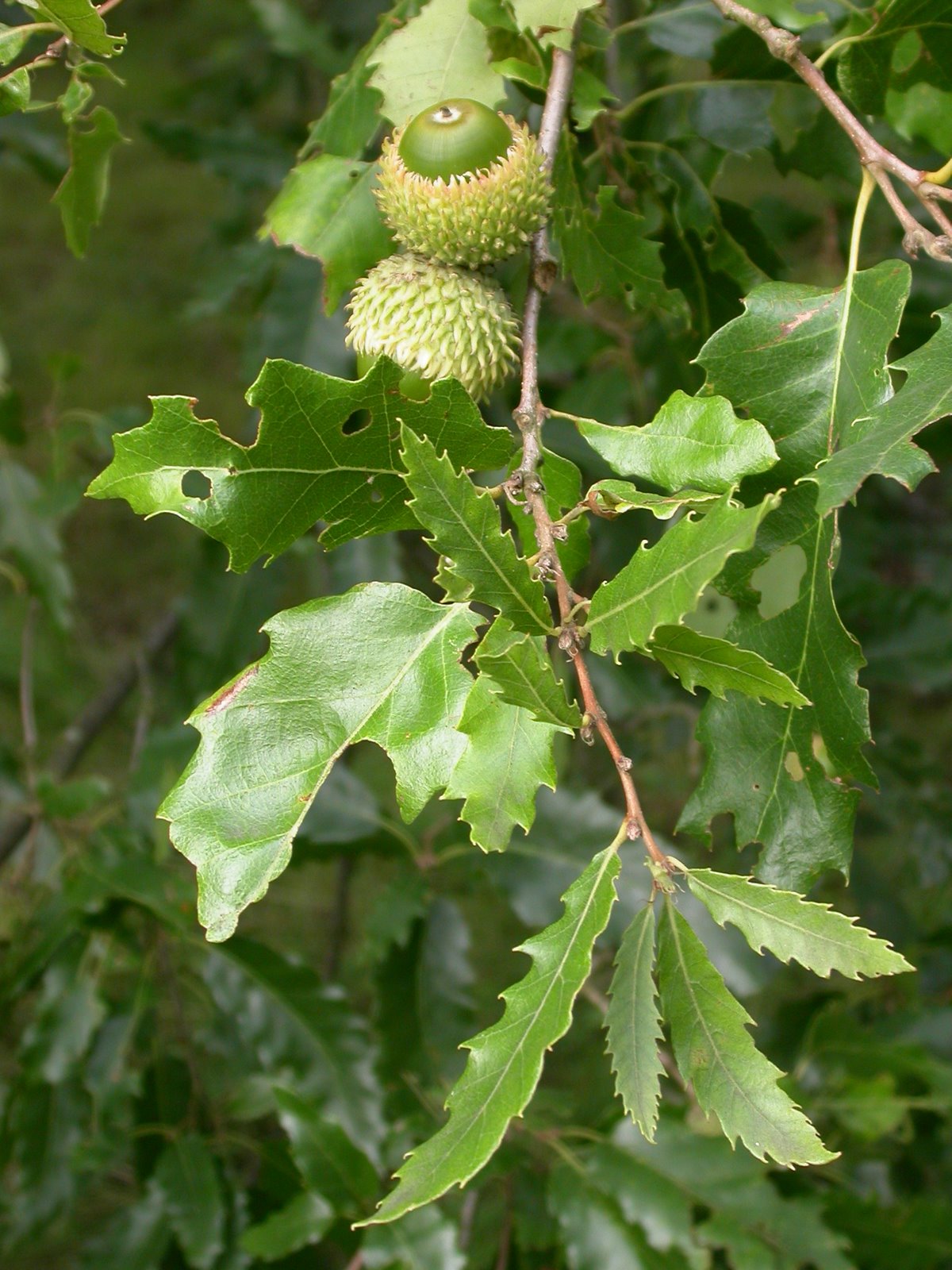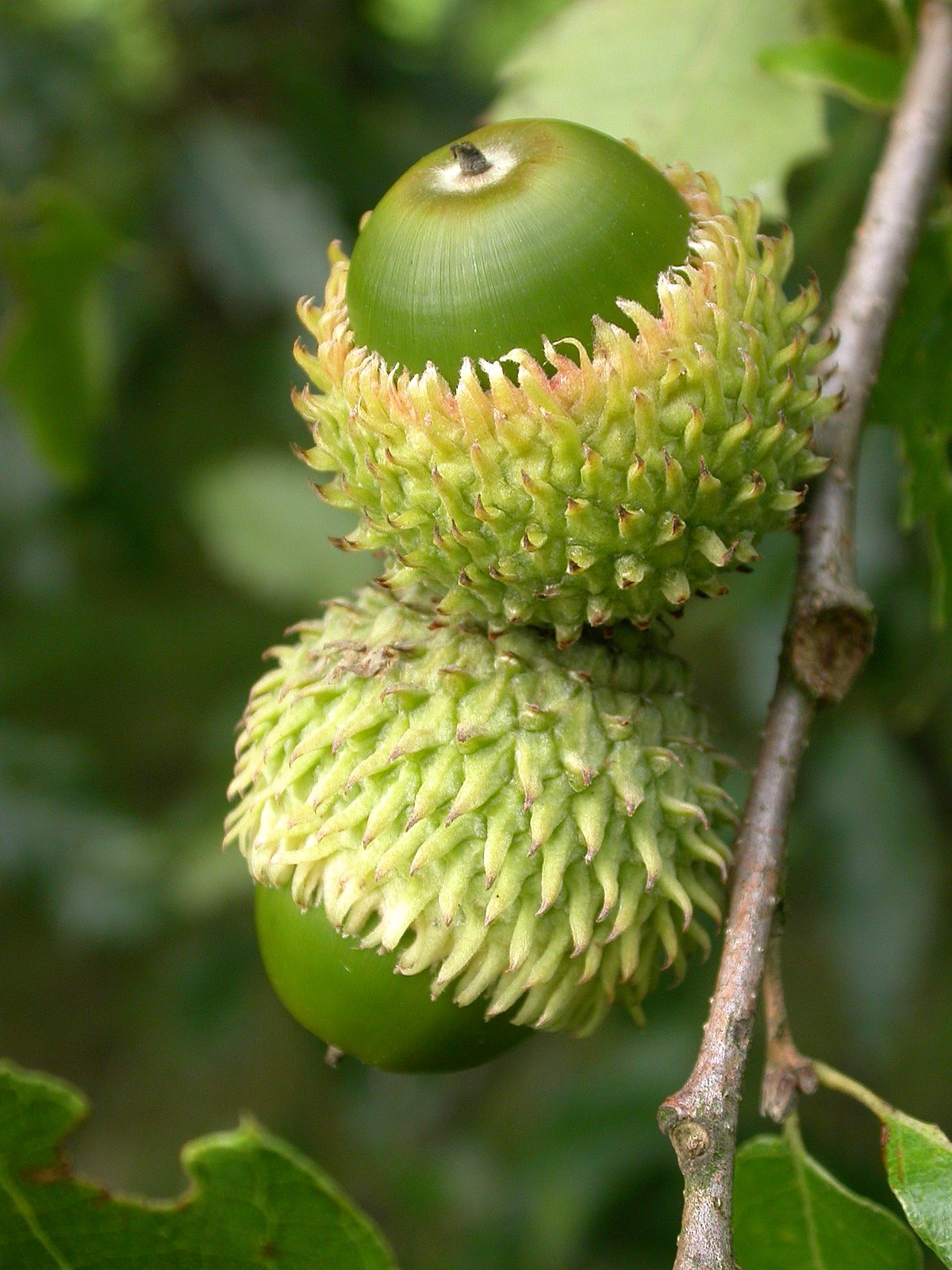Quercus libani on:
[Wikipedia]
[Google]
[Amazon]
''Quercus libani'', the Lebanon oak, is a species of



oak
An oak is a hardwood tree or shrub in the genus ''Quercus'' of the beech family. They have spirally arranged leaves, often with lobed edges, and a nut called an acorn, borne within a cup. The genus is widely distributed in the Northern Hemisp ...
native to the eastern Mediterranean in western Asia, including in western Syria, northeastern Israel, eastern Turkey, and northern Iraq and Iran. Despite the name, the species is not present in Lebanon.
Description
''Quercus libani'' is adeciduous
In the fields of horticulture and botany, the term deciduous () means "falling off at maturity" and "tending to fall off", in reference to trees and shrubs that seasonally shed Leaf, leaves, usually in the autumn; to the shedding of petals, aft ...
tree growing to . The deciduous leaf is slender, elongated and often asymmetrical, its base is round and its tip is slightly pointed. In the adult state the leaf's upper side is dark green and the under side is pale green.
The flowers are monoecious
Monoecy (; adj. monoecious ) is a sexual system in seed plants where separate male and female cones or flowers are present on the same plant. It is a monomorphic sexual system comparable with gynomonoecy, andromonoecy and trimonoecy, and contras ...
, meaning that flowers from both sexes can be found on the same tree. They are pollinated by wind. The tree produces acorn
The acorn is the nut (fruit), nut of the oaks and their close relatives (genera ''Quercus'', ''Notholithocarpus'' and ''Lithocarpus'', in the family Fagaceae). It usually contains a seedling surrounded by two cotyledons (seedling leaves), en ...
s that grow to about in diameter. Its length is half covered by the cupule.


Habitat
The Lebanon oak can grow in medium loamy to heavy clay soils, with no preference tosoil acidity
Soil pH is a measure of the acidity or basicity (alkalinity) of a soil. Soil pH is a key characteristic that can be used to make informative analysis both qualitative and quantitatively regarding soil characteristics. pH is defined as the nega ...
. The tree can grow in direct sunlight to semi-shade. It can endure strong winds, but not salty maritime exposures.
Cultivation

Ornamental tree
''Quercus libani'' is cultivated and planted as anornamental tree
Ornamental plants or ''garden plants'' are plants that are primarily grown for their beauty but also for qualities such as scent or how they shape physical space. Many flowering plants and garden varieties tend to be specially bred cultivars th ...
in gardens, parks, and habitat restoration
Ecological restoration, or ecosystem restoration, is the process of assisting the recovery of an ecosystem that has been degraded, damaged, destroyed or transformed. It is distinct from conservation in that it attempts to retroactively repair ...
projects. It is successful in drought-tolerant landscape gardens.
The tree does not tolerate root disturbance well, therefore landscape trees should not be moved once planted, or transplanted from native habitat
In ecology, habitat refers to the array of resources, biotic factors that are present in an area, such as to support the survival and reproduction of a particular species. A species' habitat can be seen as the physical manifestation of its ...
s. Acorns sown ''in situ
is a Latin phrase meaning 'in place' or 'on site', derived from ' ('in') and ' ( ablative of ''situs'', ). The term typically refers to the examination or occurrence of a process within its original context, without relocation. The term is use ...
'' will produce the best trees, in growth rate and deep rooted drought tolerance. The acorns are sown as they ripen. Acorns lose their viability if they dry out, and so need to be kept in a moist and cool place away from rodents until planting.
Biological pest control
Theleaf litter
Plant litter (also leaf litter, tree litter, soil litter, litterfall, or duff) is dead plant material (such as leaves, bark, needles, twigs, and cladodes) that has fallen to the ground. This detritus or dead organic material and its constituen ...
of the Lebanon oak is used as a biological pest control
Biological control or biocontrol is a method of controlling pests, whether pest animals such as insects and mites, weeds, or pathogens affecting animals or plants by using other organisms. It relies on predation, parasitism, herbivory, or ot ...
—herbivore insect repellent for protecting other plants. Its leaves placed as a mulch
A mulch is a layer of material applied to the surface of soil. Reasons for applying mulch include conservation of soil moisture, improving soil fertility, fertility and health of the soil, reducing Weed control, weed growth, and enhancing the v ...
layer around vulnerable plants effectively repels snails, slugs, and grubs. Fresh leaves can inhibit plant growth, and so are not used directly from the tree. Being deciduous, much beneficial leaf litter is produced in the autumn.
Uses
Lebanon oak wood is very hard and resistant to insect and fungal attack and is used in construction.Food
The acorns are very bitter due to high concentrations oftannin
Tannins (or tannoids) are a class of astringent, polyphenolic biomolecules that bind to and Precipitation (chemistry), precipitate proteins and various other organic compounds including amino acids and alkaloids. The term ''tannin'' is widel ...
s. This bitter taste can be leached out by washing the acorns in running water, but this causes the loss of many beneficial minerals.
The acorns can be dried and ground it into a powder and used to thicken stews and may be mixed with cereals for making bread. The roasted bitter acorns may be used as a coffee substitute.
Medicinal
Galls
Galls (from the Latin , 'oak-apple') or ''cecidia'' (from the Greek , anything gushing out) are a kind of swelling growth on the external tissues of plants. Plant galls are abnormal outgrowths of plant tissues, similar to benign tumors or wart ...
produced by the larvae
A larva (; : larvae ) is a distinct juvenile form many animals undergo before metamorphosis into their next life stage. Animals with indirect developmental biology, development such as insects, some arachnids, amphibians, or cnidarians typical ...
of different insects that may be found on the trees have especially high tannin concentrations, are highly astringent
An astringent (sometimes called adstringent) is a chemical that shrinks or constricts body tissues. The word derives from the Latin '' adstringere'', which means "to bind fast". Astringency, the dry, puckering or numbing mouthfeel caused by t ...
and were used in the treatment of haemorrhage
Bleeding, hemorrhage, haemorrhage or blood loss, is blood escaping from the circulatory system from damaged blood vessels. Bleeding can occur internally, or externally either through a natural opening such as the mouth, nose, ear, urethra, vag ...
and diarrhea
Diarrhea (American English), also spelled diarrhoea or diarrhœa (British English), is the condition of having at least three loose, liquid, or watery bowel movements in a day. It often lasts for a few days and can result in dehydration d ...
. Tannin from the galls are also used as dye
Juan de Guillebon, better known by his stage name DyE, is a French musician. He is known for the music video of the single "Fantasy
Fantasy is a genre of speculative fiction that involves supernatural or Magic (supernatural), magical ele ...
.
References
{{Taxonbar, from=Q1488985 libani Flora of Western Asia Medicinal plants Trees of Mediterranean climate Garden plants of Asia Ornamental trees Plant toxin insecticides Plants described in 1801